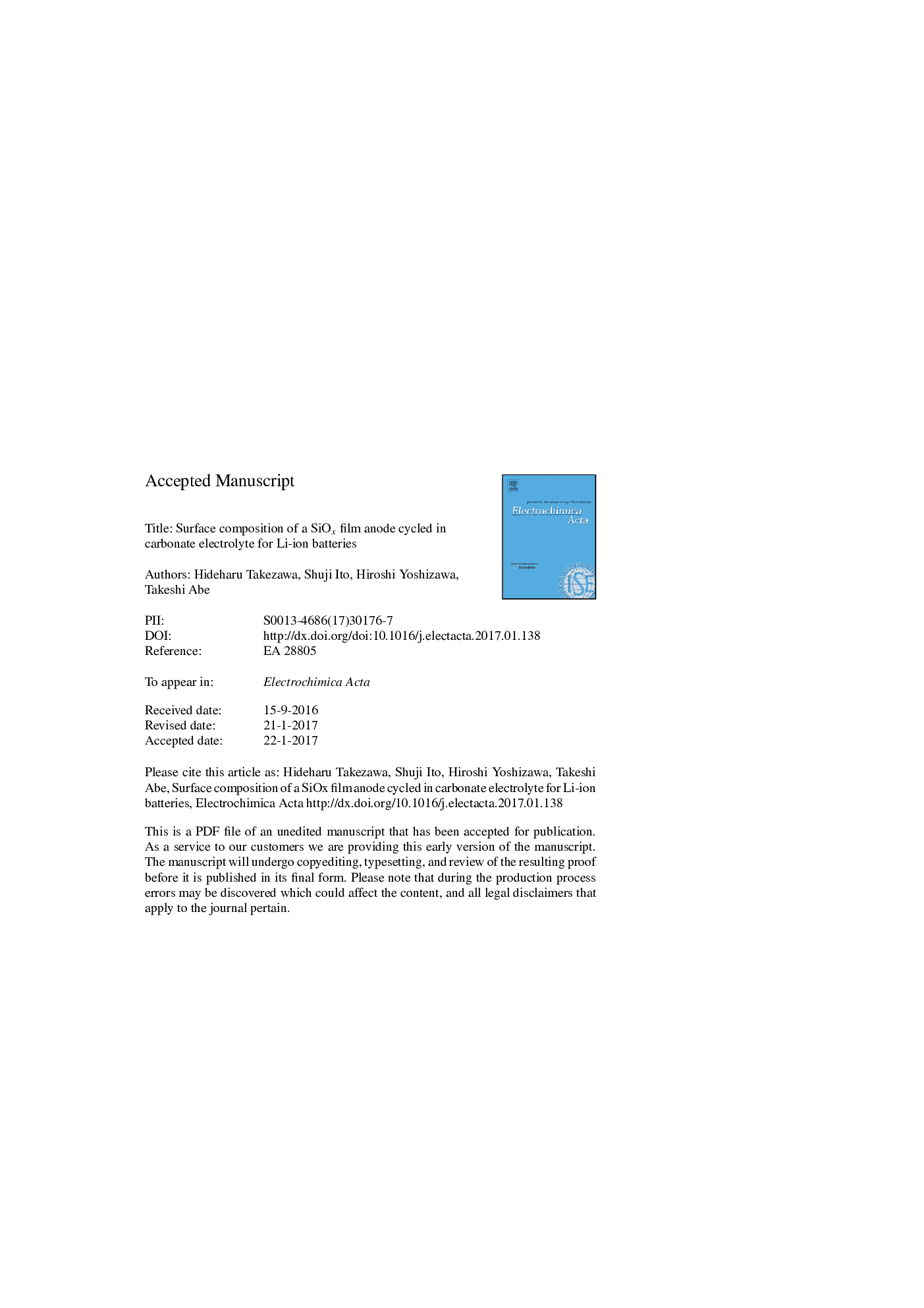| Article ID | Journal | Published Year | Pages | File Type |
|---|---|---|---|---|
| 4767328 | Electrochimica Acta | 2017 | 29 Pages |
Abstract
Direct reactions between an aprotic electrolyte and the Li-Si alloy in a lithium-ion battery anode can cause rapid capacity fading during cycling. The extent of these reactions reduces drastically as the value of x in SiOx, i.e., the inactive phase content in lithiated SiOx, increases. Herein, we analyzed the surfaces of SiOx films that had been cycled in carbonate electrolytes using X-ray photoelectron spectroscopy to study the mechanism by which the direct reactions are suppressed on SiOx electrodes with larger x values. Similar solid electrolyte interface (SEI) layers were formed on SiOx samples with different values of x. The fully lithiated Si (Li4Si) in the outer layer of the bulk SiO0.17 was converted to partially lithiated Si and oxygenated products after cycling. In contrast, the Li4Si content remained unchanged in SiO1.02 samples. The correlation between the lithiation state and x is supported by the binding energy position of the Si 2p peak corresponding to the Li-Si alloy. These results suggest that the inactive species, rather than the SEI, plays a more dominant role in protecting the Li-Si alloy against carbonate solvents.
Related Topics
Physical Sciences and Engineering
Chemical Engineering
Chemical Engineering (General)
Authors
Hideharu Takezawa, Shuji Ito, Hiroshi Yoshizawa, Takeshi Abe,
